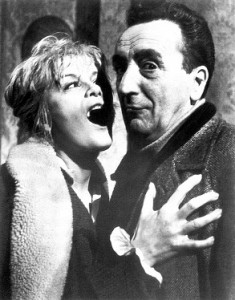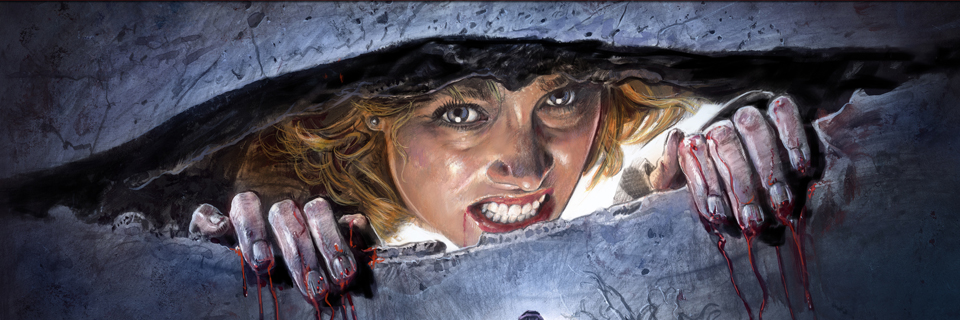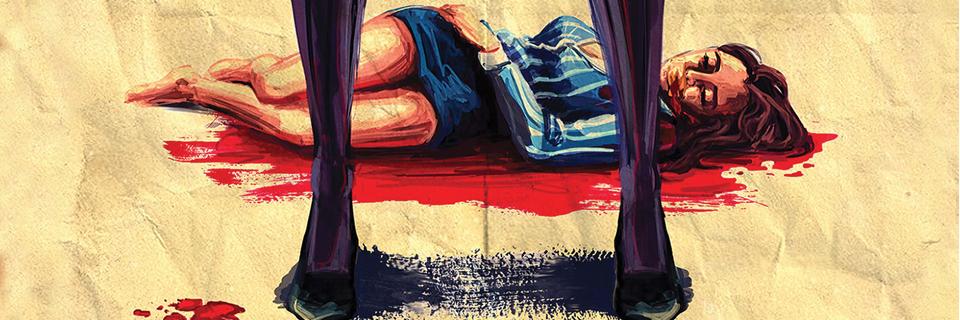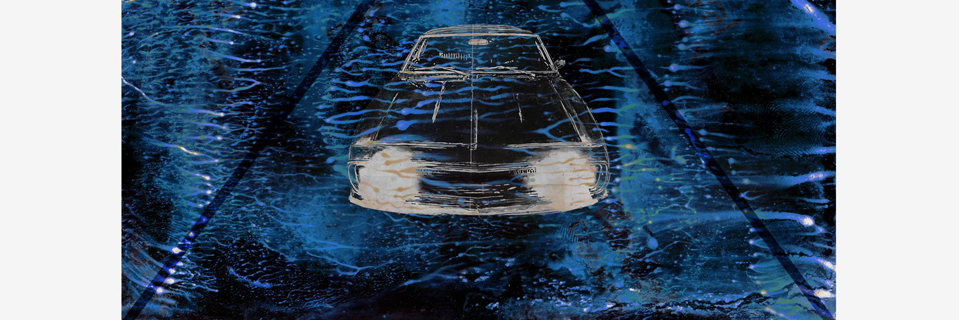
Let’s set a scene, shall we? It’s a coffee shop–one of those terribly pretentious ones with all the “vintage” advertisements and foreign language posters on the walls. The person next to you is intently scribbling away in a black notebook. What’s she/he writing? You probably figure that they’re taking notes for their planned novel or next wretched poem. Maybe they’re jotting down journal entries, or maybe they’re an elaborately dressed, yet terribly prosaic soul who cannot remember what they need to purchase at the grocery store. Either way, this person is interested in you.
No, this is not a step-up to a romantic tryst. Rather, you are about to embark on the sharing of ideals, beliefs, and/or knowledge with each other. This other lover of the java bean decides to start the conversation with “so, what strikes yer fancy?” You, in a fit of madness, decide to be honest for once, and answer “foreign films.”
If this exchange happened in a bar, then expect a snide chuckle or, worse yet, a full-blown onslaught of hipster baiting. But wait, you say, I like foreign horror films. Horror movies are, according to the distinguished Rob Zombie, akin to skin flicks, and are usually treated as such in the popular imagination. Words such as exploitation, gratuitous, and salacious are often synonymous with the horror film genre, despite the fright film’s distinguished legacy (which stretches back to cinema’s silent era–a time wherein traditional art and artists often collaborated with the new medium). Your coffee shop colleague repeats all of this back to you in a gentler manner than the hypothetical bar regular, expecting that you have some comment or comments for the defense. Aha! Here’s your chance to flex your historical muscles; for, as a fan of foreign horror films, you actually have a pretty darn good answer as to why horror films are so often associated with all things ghoulish and profiteering.
Your answer? Why, it’s Mario Bava (of course). Bava, the Italian maestro of the ‘60s and ‘70s, is, arguably, the bridge between the gothic, German Expressionist-influenced horror films of the ‘20s, ‘30s, and ‘40s, and the splatterpunk era of the 1980s and 1990s. Even today, Bava’s presence can be felt in both the ultra-gory remake of Evil Dead (a film series that shows not only the influence of Italian cinema generally, but more specifically the blood-drenched hand of Lucio Fulci, one of Bava’s many successors) and the sensual allure of Xan Cassavetes’s Kiss of the Damned. In particular, the poster of Kiss of the Damned (which, although it was made in 2012, was released in the U.S. on May 3, 2013) looks like it could’ve been ripped off of the streets of Rome circa 1965.
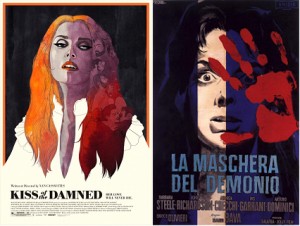
Okay, so we now understand that Bava is at least appreciated by modern auteurs and producers. Film geeks, a rare breed if ever there was one, also know that Bava’s praises have been sung by such American masters as Quentin Tarantino and Martin Scorsese. But the lingering question is: why? What is it about Bava’s filmography that makes him a pervasive figure in horror cinema? Well, as with everything, it’s best to start at the beginning.
The Genesis of Giallo
After the Second World War and the disintegration of the world’s first fascist state, Italy witnessed a blossoming of cinematic creativity not unlike the one experienced by Germany, their Axis partner, after the First World War. Most notably, the neorealism movement of the late ‘40s, which was pioneered by directors such as Vittorio De Sica, Frederico Fellini, and Roberto Rossellini, reinvigorated Europe’s passion for poetry on celluloid, as well as the Continent’s age-old appreciation for art with a social consciousness. Italian neorealism helped to inspire other European experiments in art cinema, with the most notable case being in France and the French New Wave movement of the countercultural ‘60s.
Beneath this lauded and critically praised glamour were two like-minded film genres of postwar Europe: West Germany’s krimi films and the giallo films of Italy. In the former, the Danish/German company Rialto Film established a sub-genre of the German Kriminalfilm (or “crime film”) around the adaptations of British pulp master Edgar Wallace’s many criminal-centric novels from the interwar period. In the latter, Italian filmmakers, producers, and studios began creating suspenseful, lurid, and sexy crime thrillers that embraced elements of horror, erotica, and mystery. The term “giallo,” which is Italian for “yellow,” has as its origin the Il Giallo Mondadori series of reprinted and original crime and mystery novels. These novels, which were noted for their distinct yellow packaging, were not only immensely popular, but they helped to introduce the distinctly American school of “hard-boiled” fiction into Italian pop culture, thus inaugurating a new era of violence and exploitation in Italian film.
At the forefront of giallo stood Bava, a Ligurian cinematographer who had been working in the movies since the late 1930s. Despite Bava’s status as a veteran of the Italian film scene, it wasn’t until 1960 when he got the chance to direct his first feature-length film. What Bava ultimately produced was Black Sunday, a film that is now widely considered a horror classic. Black Sunday is not, however, a giallo film. Black Sunday, which is very loosely based on Nikolai Gogol’s 1835 short story Viy, tells the tale of the Moldavian vampire-witch Princess Adja, played by Barbara Steele, a then little-known British actress, and her vengeful resurrection. The first three minutes of Black Sunday are some of the most memorable in horror film history, with the most often cited being the moment when Princess Adja, after issuing a Satanic curse against her judges, is forced to wear the so-called “mask of Satan” – an iron maiden-like veil that contains imbedded spikes on the inside. Making this scene all the more potent are Bava’s cuts between first- and third-person vantage points, with the first-person view being a shocking glimpse inside of the mask’s torturous interior.
Black Sunday was released and distributed in the United States by American International Pictures, a company that would soon purchase and dub many more European and Asian horror films for their numerous double-bills during the 1960s. American International Pictures also acted as censors of a sort on Black Sunday, trimming and editing out many scenes that were deemed too violent. This would prove to be a constant critique of Bava’s films, and even though Black Sunday received mostly positive reviews upon its release, critics and tastemakers alike often agreed that Bava’s worked bordered on the pornographic.
This critique would only increase as the ‘60s worn on. In 1963, Bava co-wrote and directed two signature films: The Girl Who Knew Too Much (La ragazza che sapeva troppo) and Black Sabbath (I tre volti della paura, or The Three Faces of Fear). The Girl Who Knew Too Much is often regarded as the first true giallo film, with its mixture of murder, mystery, violence, and sexualized suspense. In The Girl Who Knew Too Much, American tourist Nora Davis (played by Italian actress Letícia Román) witnesses the murder of a young woman on the Piazzi di Spagna after being knocked out by a mugger. Nora wakes up in the arms of a police officer and tells him of what she saw, but for her pains she receives harsh treatment at the hands of medical and legal authorities who think that she is a drunk with extreme hallucinations. The scenes that represent Davis’s nightmarish imprisonment in a hospital bed are some of the film’s best, and, at times, The Girl Who Knew Too Much can be viewed as a low(er)-brow art film, especially given the film’s luscious black-and-white cinematography. Unfortunately, while the plot of The Girl Who Knew Too Much is a bit strained (Davis, along with the help of her love interest Dr. Marcello Bassi [played by American actor John Saxon] investigates a decades old series of murders that all involve a string of alphabetically sequential victims, only to find that she is next because her last name begins with “D”) and the final minutes of the film are downright horrid (SPOILER ALERT: marijuana is involved), the film has proven to be incredibly influential with the passage of time, and the genre that it helped to launch – giallo – didn’t just stay in Italy. Frenzy, Alfred Hitcock’s penultimate film from 1972, contains many giallo hallmarks (especially in regards to camera angles), and the little known American thriller The Eyes of Laura Mars, which stars a very young Tommy Lee Jones and was written by an even more obscure John Carpenter, similarly displays the uniquely stylized bloodletting that is synonymous with the giallo genre.
Giallo wasn’t Bava’s only forte, and in the same year as his first giallo film, he directed and co-wrote Black Sabbath. Black Sabbath, which is the source of the name for that band from Birmingham, is a horror anthology film, one of many that were popular in Europe (Great Britain especially) during the 1960s and early 1970s. Three separate tales are told in Black Sabbath: “The Telephone,” a giallo short about a threatened call-girl that incorporates the telephonic threat motif of The Girl Who Knew Too Much as well as the shadowy sex killer theme that Bava would later make great use of in Blood and Black Lace (1964); “The Wurdalak,” an atmospheric and gothic story that stars Boris Karloff as a 19th-century Russian vampire named Gorcha, and; “The Drop of Water,” a Victorain era ghost story that has terrifically frightening make-up. Of the three, “The Wurdalak” is the most often cited; for, not only does it show Bava returning to Black Sunday-esque horror (from the excessive shadow play to the script being based on yet another nineteenth century Russian writer, this time Aleksey Tolstoy), but the gorgeous technicolor of “The Wurdalak” highlights what would become a hallmark of Bava’s films of the mid-1960s and early 1970s: clear, pristine, and bright technicolor combined with narratives that explicitly showcase violence and sexuality.
Blood and Black Lace, which is often spoken of as the most thoroughgoing giallo film of the ‘60s, is, without question, one of the clearest examples of Bava’s unique style. Set amongst the fashionable world of high couture in Rome, Blood and Black Lace prefigures the many “body count” films of the 1980s in that we, the audience, watch as a masked killer in a trench coat stalks and kills a high number of beautiful, sexualized female victims. While the plot of Blood and Black Lace is incredibly flimsy (a fault that handicaps many of Bava’s films), the cinematography and lighting are exceptional. From the large amounts of gore to the revealing shots of dead and maimed bodies, Blood and Black Lace is an easy ancestor to not only the slasher film genre, but also to the films of Eli Roth and Rob Zombie, two directors who spare no expense in creating hyper-visual, yet intentionally grotesque films.
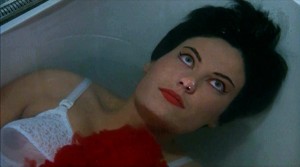
Blood and Black Lace is the apotheosis of Bava’s giallo era, and it seems like the now middle-aged director knew this at the time. Bava would only revisit the genre a few times later in his career, and when he did, he never managed to equal the power or potency of Blood and Black Lace. Even more terribly, when the ‘60s turned into the ‘70s, Bava’s artistic genius seemed to decline. By 1970, Bava no longer seemed capable of such masterpieces as Black Sunday, Blood and Black Lace, or Kill, Baby, Kill (another gothic horror film set in Eastern Europe and often considered to be Bava’s greatest artistic accomplishment). This is not to say that Bava couldn’t make stand-out films any more, but even Bava’s best films from the 1970s can’t compare to his mediocre ones from a decade earlier.
Still, two of Bava’s films from the 1970s deserve whatever attention we have left here. The first, entitled either Bay of Blood or Twitch of the Death Nerve (1971), represents the apex of Bava’s bloodlust. Bay of Blood isn’t so much a story as it is an excuse to put on screen one horrendously gory death after another. Bava wastes no time with the death scenes either, with Bay of Blood opening with two deaths (one via strangulation, the other via a sharpened knife) in less than ten minutes. The rest of the film rampages through one horror film stereotype after another, from the horny college kids to the business type who is willing to kill in order to get his ideas developed. Bay of Blood also has a sickeningly gleeful side to it, and its confusing yet delightfully disturbing ending presages the combination of snuff film flavor and slapstick hijinks in Wes Craven’s The Last House on the Left (1972). Craven’s producer on The Last House on the Left seems to have also been inspired by Bava’s aimless slasher film, and when Sean Cunningham stepped into direct Friday the 13th, he lifted several themes and settings from Bay of Blood, from the rural backdrop to the killer’s use of agricultural and marine tools as weapons. Even more blatantly, Steve Miner’s Friday the 13th Part 2, which is the cinematic debut of Jason Voorhees as the terrorizer of Camp Crystal Lake, recreates many of the exact same death sequences as those in Bay of Blood.
It is obvious then that Bava had an impact on American film. Maybe this is due to the fact that Bava and many other European horror filmmakers threw American culture back at its motherland, except with a more Continental sense of artistry. After all, giallo is mostly a retelling of American detective and crime fiction with a greater emphasis on the murderer and the act of killing. And when Bava and his successors took on well-worn American genres such as zombies and harried teenagers, they deleted the schlock of William Castle in order to include more gratuitous sex and violence than was typically allowable in Hollywood. This, after all, is in the European bloodstream. Le Théâtre du Grand-Guignol, which happily combined erotica, comedy, and torture, ruled the Pigalle section of Paris for nearly one hundred years. The wanton amorality of Grand Guignol is easy to discern in not only Bay of Blood, but also in the myriad of films that copied it. And even though Bay of Blood is not a good movie per se, it is certainly Bava’s most influential. More than any other film, Bay of Blood created the slasher film genre, and its proto-punk attitude and low-fi production can be seen in countless American films from 1980 onwards.
Sadly, when Bava tried to recreate American film techniques in Europe, the exchange was decidedly less successful. Baron Blood (1972), which was co-produced by Samuel Z. Arkoff of American International Pictures, is Bava’s nadir, his cellar-dweller. While still maintaining Bava’s typically superb lightning and color, Baron Blood is a dud of sizable proportions, and its attempt to cash in on the West German and American craze for Satanic stories makes the film all the more pathetic. Lisa and the Devil (1974), Bava’s final horror film of note, comes close to achieving the high artistic standards that Bava set for it, but the film ultimately cannot surmount its own convoluted plot. The fact that Lisa and the Devil stars Elke Sommer and a brilliantly malevolent Telly Savalas (who still maintains Detective Theo Kojak’s love of the lolly pop in his role as a demonic butler) did not stop Alfredo Leone, the film’s producer, from trying to jump on the bandwagon of the then highly popular film The Exorcist. Edited and retitled as The House of Exorcism, Leone tried to Americanize Lisa and the Devil all to no avail. In the end, both versions were commercial flops.
This is essentially how Bava’s career ended. When he died of a heart attack in 1980 at the age of sixty-five, Bava was not only regarded as the founder of Italian horror, but also as an artist who never fully lived up to the promise of his early films. If Bava had ended his career around 1966, then it wouldn’t be surprising to see some of his films in the much vaunted Criterion Collection. As it stands today, Bava is nowhere to be found in the Criterion Collection’s catalog. This is certainly a shame, for Bava is as much an auteur as any of his contemporaries. Even the worst Bava film contains the author’s recognizable style and feeling, and it is this style which has been copied ad inifinitum for over six decades now. Cinephiles and horror heads alike know this, and when Kino Lorber began reissuing many of Bava’s films as home videos and DVDs, a new generation of film buffs rejoiced. Now that Netflix is streaming eight of Bava’s giallo and horror films, you too can now appreciate the lost legacy of Mario Bava. So, the next time some coffee shop goon smirks at your interest in horror films, just school the nitwit on Bava and his lengthy shadow over modern horror and thriller cinema.
